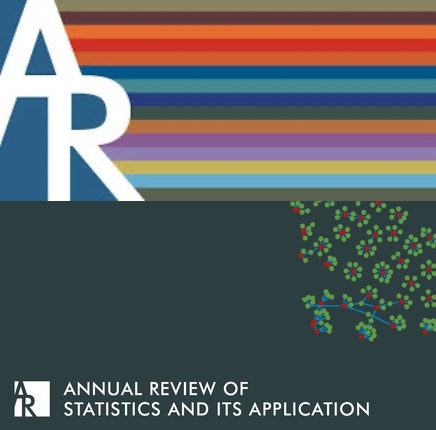时空数据的统计深度学习
IF 8.7
1区 数学
Q1 MATHEMATICS, INTERDISCIPLINARY APPLICATIONS
Annual Review of Statistics and Its Application
Pub Date : 2023-03-09
DOI:10.1146/annurev-statistics-033021-112628
引用次数: 0
摘要
近年来,深度神经网络模型已经变得无处不在,并且已经应用于几乎所有的科学、工程和工业领域。这些模型对于在空间(例如,图像)和时间(例如,序列)上具有强依赖性的数据特别有用。事实上,深度模型也被统计界广泛用于空间和时空数据的建模,例如,使用多层次贝叶斯分层模型和深度高斯过程。在这篇综述中,我们首先概述了用于空间和时空数据建模的传统统计和机器学习观点,然后重点介绍了最近为潜在过程、数据和参数规范开发的各种混合模型。这些混合模型将统计建模思想与深度神经网络模型相结合,以利用每种建模范式的优势。最后,我们概述了已被证明对这些混合模型有用的计算技术,并简要讨论了未来的研究方向。本文章由计算机程序翻译,如有差异,请以英文原文为准。
Statistical Deep Learning for Spatial and Spatiotemporal Data
Deep neural network models have become ubiquitous in recent years and have been applied to nearly all areas of science, engineering, and industry. These models are particularly useful for data that have strong dependencies in space (e.g., images) and time (e.g., sequences). Indeed, deep models have also been extensively used by the statistical community to model spatial and spatiotemporal data through, for example, the use of multilevel Bayesian hierarchical models and deep Gaussian processes. In this review, we first present an overview of traditional statistical and machine learning perspectives for modeling spatial and spatiotemporal data, and then focus on a variety of hybrid models that have recently been developed for latent process, data, and parameter specifications. These hybrid models integrate statistical modeling ideas with deep neural network models in order to take advantage of the strengths of each modeling paradigm. We conclude by giving an overview of computational technologies that have proven useful for these hybrid models, and with a brief discussion on future research directions.
求助全文
通过发布文献求助,成功后即可免费获取论文全文。
去求助
来源期刊

Annual Review of Statistics and Its Application
MATHEMATICS, INTERDISCIPLINARY APPLICATIONS-STATISTICS & PROBABILITY
CiteScore
13.40
自引率
1.30%
发文量
29
期刊介绍:
The Annual Review of Statistics and Its Application publishes comprehensive review articles focusing on methodological advancements in statistics and the utilization of computational tools facilitating these advancements. It is abstracted and indexed in Scopus, Science Citation Index Expanded, and Inspec.
 求助内容:
求助内容: 应助结果提醒方式:
应助结果提醒方式:


